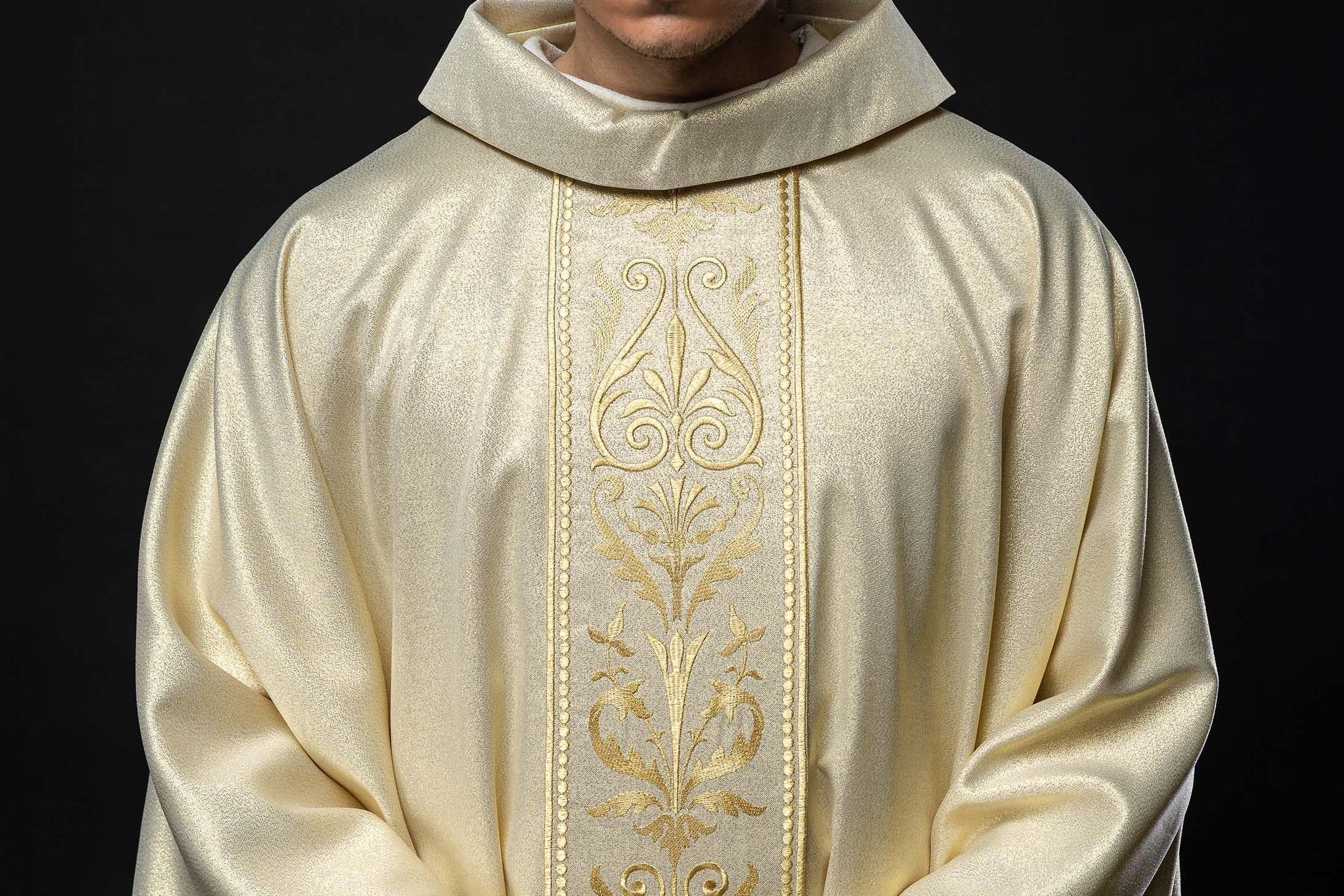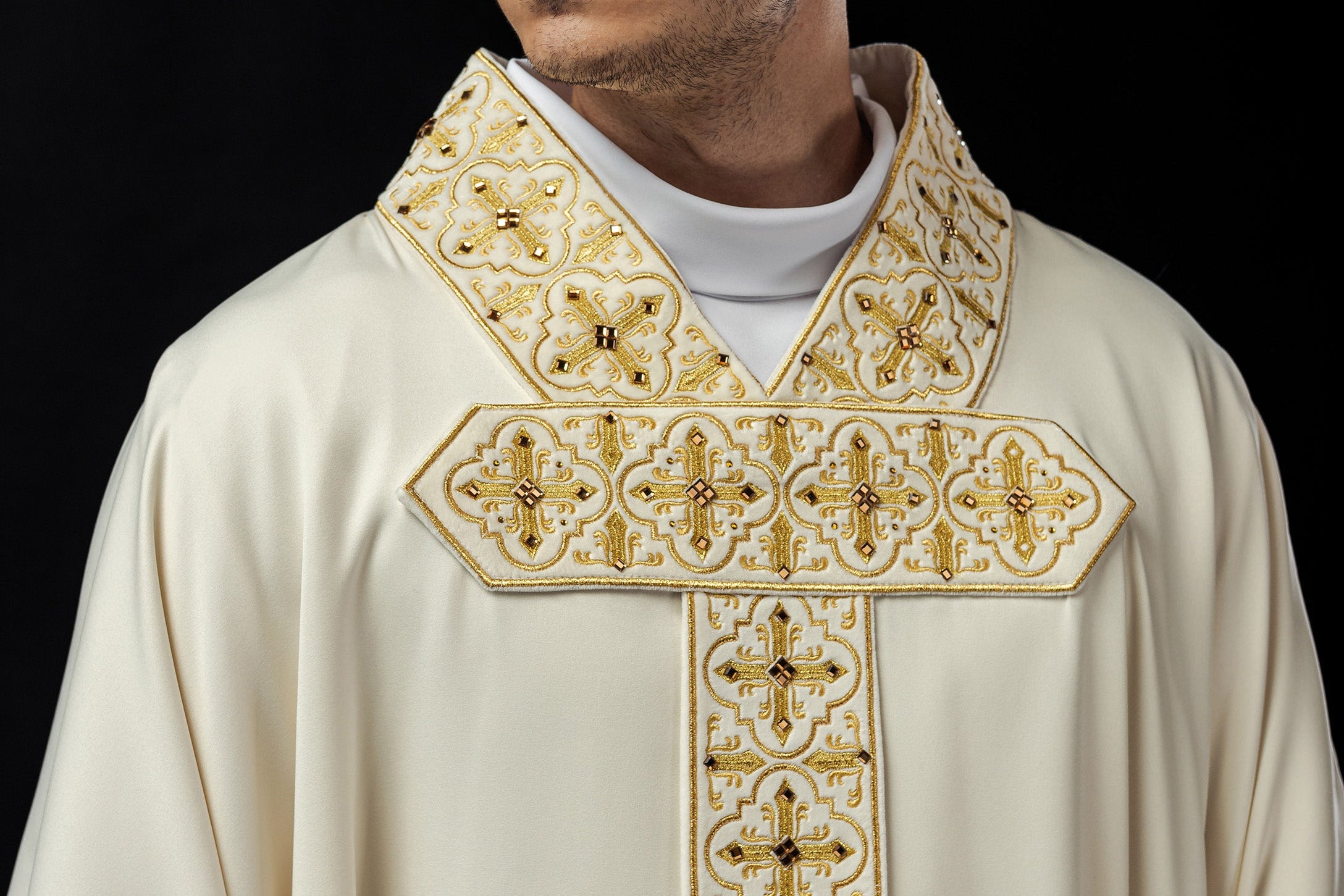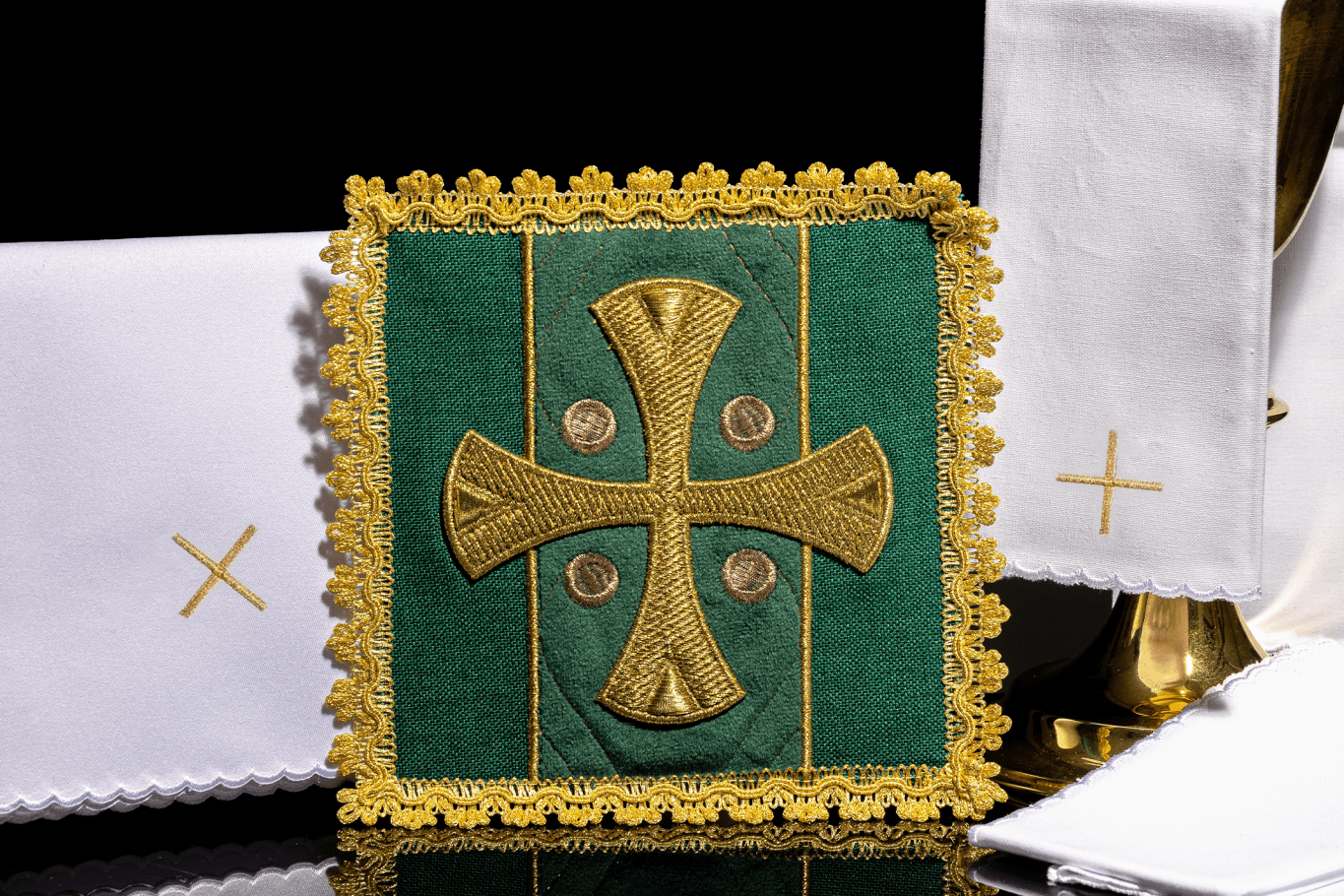
How to Conduct Liturgy on the Feast of St. Stanislaus, Patron Saint of Poland?
How to Conduct Liturgy on the Feast of St. Stanislaus, Patron Saint of Poland?
The Feast of Saint Stanislaus, Bishop and Martyr, celebrated on May 7th, is one of the most important holidays in the Polish liturgical calendar. As the patron saint of Poland and the main patron of the Archdiocese of Krakow, St. Stanislaus is an extremely important figure for the national and spiritual identity of our country. Conducting the liturgy in his honor requires special preparation, which will allow the faithful to experience the mystery of faith and the example of the life of the holy patron more deeply.
Why is the Liturgy in Honor of St. Stanislaus Important?
Saint Stanislaus of Szczepanów, who lived in the 11th century, is a symbol of unwavering faith, courage in defending God's laws and the Church, as well as a deep attachment to the homeland. His martyrdom, resulting from a conflict with the then secular authority, became the foundation for building an independent and strong Church in Poland. The liturgy celebrated in his honor is an opportunity to remind ourselves of these values, as well as to pray for courage in professing the faith in the modern world.
What are the Key Elements of the Liturgy on the Feast of St. Stanislaus?
Preparing the liturgy requires taking into account several key areas that will strengthen its message and spiritual dimension.
What Liturgical Texts are Recommended for the Feast of St. Stanislaus?
The liturgy for the feast of St. Stanislaus has its own breviary and missal texts, which have been specially developed for this purpose. These include:
- Roman Missal: First of all, use the missal form for the commemoration of St. Stanislaus, bishop and martyr. In the text of the Missal, we will find appropriate readings, prayers, preface, and the final blessing formula.
- Biblical Readings: There are usually three sets of readings to choose from. The first reading often comes from the Old Testament (e.g., from the Book of Wisdom or Jeremiah), speaking of justice and faithfulness to God. The Gospel often presents fragments about boldly proclaiming the truth, about imitating Christ, and about pastoral love (e.g., fragments from the Gospel of St. John about the Good Shepherd).
- Prayer of the Faithful: It should contain intentions for the Church in Poland, for the nation, for bishops, priests, as well as for people persecuted for their faith, following the example of St. Stanislaus.
- Songs and Prayers: It is good to choose songs referring to St. Stanislaus, his martyrdom, and the role of the patron saint of Poland. These can be historical songs or contemporary hymns.
What Liturgical Vestments are Appropriate for this Celebration?
Liturgical vestments play an important role in emphasizing the character of the holiday. For a holy martyr, liturgical vestments in red, symbolizing martyrdom and shed blood, are appropriate. However, due to his episcopal ministry, it is also permissible to use vestments in white or gold, which symbolize his holiness and pastoral authority.
- Chasuble: The most appropriate choice is a chasuble in red, often richly decorated with gold or silver embroidery, depicting symbols associated with St. Stanislaus, such as his attributes (crozier, sword, dragon) or biblical motifs. You can also consider a chasuble in white or gold, symbolizing his holiness and episcopal mission.
- Stole and other Vestments: The appropriately selected stole, dalmatic (if there is a celebrant with a deacon), and other liturgical vestments, maintained in the same color and style, should match the set.
- Other Accessories: It is worth taking care of appropriate accessories, such as a veil or covers for the chalice and paten, which will complement the entire liturgical setting.
What Songs and Music Should Accompany the Liturgy?
Music plays a key role in building the atmosphere of the celebration. For the feast of St. Stanislaus, it is worth choosing songs that emphasize his spiritual heritage and patriotic commitment.
- Historical Songs: Popular songs such as "God, who Poland" or "Everywhere dark, the night is still".
- Songs about the Saint: Works directly dedicated to St. Stanislaus, which sing of his life, martyrdom, and miracles.
- Eucharistic Songs: Depending on the part of the Mass, you can choose appropriate Eucharistic songs that emphasize the presence of Christ in the sacrament.
- Instrumentation: The selection of instruments should be in harmony with the solemn character of the celebration. Organs, choir, and wind instruments can create a rich and solemn musical setting.
What Content Should the Homily Contain During this Feast?
The homily is the heart of every liturgy and should be particularly inspiring on the feast of St. Stanislaus. The presentation of the saint's figure and his teaching can take several directions:
- Faithfulness to God and the Church: Emphasizing the courage of St. Stanislaus in defending God's laws and the independence of the Church, which was the motive for his conflict with King Bolesław the Bold. You can refer to the contemporary challenges facing the Church.
- Patriotism and Responsibility for the Homeland: Showing St. Stanislaus as a model patriot who cared for the spiritual and moral good of the nation. It is worth encouraging the faithful to take responsibility for shaping modern Poland.
- Witness of Faith in the Face of Adversity: Reminding about the martyrdom of St. Stanislaus as the ultimate testimony of his faith. You can inspire the faithful to have courage in professing their faith in difficult situations.
- Sense of National Unity: Emphasizing the role of St. Stanislaus as a unifying figure for Poles, regardless of times and historical contexts.
- Application of Haftina's Products: In the context of the article, you can subtly mention the offer of Haftina, which has a rich selection of chasubles and liturgical vestments, including those dedicated to the celebrations of the patrons of Poland. For example: "It is worth remembering that appropriately selected liturgical vestments, such as chasubles in red or gold, can further emphasize the solemnity of the liturgy in honor of St. Stanislaus. Haftina offers a wide selection of such products, made of the best materials and with attention to the smallest detail, which allows you to create a worthy setting for the feast of the patron saint of Poland."
What Additional Elements Can Enrich the Liturgy?
In addition to the standard liturgical elements, it is worth considering additional aspects that will make the celebration more memorable and spiritual.
- Procession with Relics: If relics of St. Stanislaus are kept in the parish, a procession with them can be organized, which will further strengthen the bond of the faithful with the patron.
- Solemn Blessing: Concluding the liturgy with a solemn blessing, with reference to the intercession of St. Stanislaus, will add depth to the final part of the Mass.
- Solemn Adoration of the Blessed Sacrament: After Mass, a short adoration can be organized, during which the faithful will be able to personally entrust themselves to the care of St. Stanislaus.
- Accompanying Celebrations: It is worth considering organizing a concert of patriotic and religious songs, historical lectures about St. Stanislaus, or a joint meeting for the faithful after the liturgy.
How to Involve Youth and Children in Preparing the Liturgy?
Involving young people in preparing the liturgy is key to passing on the values of faith and tradition to them.
- Schola or Music Group: Inviting young people to actively participate in the musical setting.
- Liturgical Service: Involving altar servers and lectors in performing their functions, with particular emphasis on explaining to them the meaning of the liturgy in honor of the patron saint of Poland.
- Preparation of Decorations: Young people can help in preparing the church decorations, referring to the symbolism of St. Stanislaus and Poland.
- Catechetical Lessons: It is worth conducting lessons devoted to the figure and teaching of St. Stanislaus, so that young people better understand the context of the celebration.
Summary
Conducting the liturgy on the feast of St. Stanislaus, patron saint of Poland, is not only an obligation but also a great opportunity for spiritual growth and strengthening the bond with our national and religious identity. Through careful preparation of texts, liturgical vestments, music, and homilies, we can create a celebration that will be a true tribute to St. Stanislaus and an inspiration for all participants. Let us remember the subtle reference to the high-quality products offered by Haftina, which perfectly fit into the aesthetics and solemnity of such events.
What Specific Attributes of St. Stanislaus Can Be Used in Decoration?
In the decoration, you can use characteristic attributes of St. Stanislaus, such as a crozier symbolizing his pastoral ministry, a sword as a sign of his martyrdom, as well as the figure of a dragon, with which, according to legend, he fought. National symbols such as white and red colors and the coat of arms of Poland are also often used.
Are There Special Prayers to St. Stanislaus that Can Be Said During the Service?
Yes, there are many prayers to St. Stanislaus that can be included in the service, e.g., at the end of Mass or during adoration. These can be litanies, novenas, or individual prayers that emphasize his role as the patron saint of Poland, defender of the faith, and guardian in difficult situations.
What Mistakes Should Be Avoided When Preparing the Liturgy for the Feast of St. Stanislaus?
First of all, one should avoid negligence in the preparation of the liturgy – from the wrong selection of texts, through inappropriate liturgical vestments, to the superficial preparation of the homily. It is also important not to omit the spiritual and patriotic message of St. Stanislaus, focusing only on the external aspects of the celebration.
What Biblical Texts Best Reflect the Spirit of the Martyrdom of St. Stanislaus?
Fragments of the Gospel speaking of imitating Christ, of courage in proclaiming the truth, and of giving one's life for friends are perfectly suitable. In the context of martyrdom, it is worth reaching for texts from the Acts of the Apostles, which describe the persecutions of the first Christians, as well as for fragments speaking of victory over evil.
How to Ensure that the Liturgy is Engaging for All Age Groups?
Engaging liturgy for all age groups is a matter of appropriate preparation. It is worth taking care of a clear graphic design of the texts, clear songs, as well as a homily adapted to the audience – with a clear message, references to everyday life, and inspiring examples. Involving young people in liturgical and musical service also significantly affects the reception of the liturgy.
Can Motifs from the Life of St. Stanislaus Be Used on the Embroideries of Liturgical Vestments?
Yes, this is a very common and beautiful practice. On liturgical vestments, especially on chasubles and banners, symbols related to the life of St. Stanislaus, such as his attributes (crozier, sword, dragon), scenes from his life, or his image are often placed. Haftina offers the possibility of creating personalized embroideries, which allows you to place these unique motifs.
What are the Main Messages of St. Stanislaus for Contemporary Poland?
The main messages of St. Stanislaus for contemporary Poland are primarily: faithfulness to God and the Church in every situation, courage in defending values, responsibility for the nation and its spiritual development, as well as national unity and an exemplary life in accordance with the Gospel.
What Additional Songs and Prayers Can Enrich the Liturgy on the Feast of the Patron Saint of Poland?
In addition to standard Mass songs, you can consider Marian songs (As Mary is the Mother of the Church and Poland), songs of patriotic and religious spirit, as well as prayers for the Homeland and for the Church in Poland. "Te Deum" or other thanksgiving songs will also work very well.
In What Way Can the Role of St. Stanislaus as Patron Saint of Bishops and Priests Be Emphasized?
Emphasizing the role of St. Stanislaus as the patron saint of bishops and priests is possible through references in the homily to his pastoral ministry, his moral authority, and spiritual leadership. It is also worth including a special prayer for priestly and episcopal vocations and for the current pastors of the Church.
What is the Meaning of the Color Red in Liturgical Vestments for the Feast of the Martyr?
The color red in liturgical vestments is traditionally the color of martyrdom. It symbolizes the shed blood of Christ and His followers, as well as the love of God burning in the heart of the faithful. On the feast of St. Stanislaus, his martyrdom makes the color red a very appropriate choice, emphasizing his faithfulness until death.
How to Best Choose the Embroidery on the Chasuble for the Feast of St. Stanislaus?
It is best to choose an embroidery that refers to the life, attributes, and teachings of St. Stanislaus. These may be motifs related to his martyrdom, such as a chalice or a sword, but also symbols of his pastoral ministry. Religious motifs, such as IHS, or national motifs, emphasizing his role as the patron saint of Poland, will also work very well. Haftina offers a wide selection of ready-made embroideries, as well as the possibility of creating individual projects.
What Biblical Readings Are Most Often Chosen for the Feast of St. Stanislaus and Why?
Readings that speak of God's justice, of courage in proclaiming the truth, and of faithfulness to God, even in the face of persecution, are often chosen. Fragments from the Gospel about the Good Shepherd (John 10:11-16) perfectly reflect the pastoral mission of the bishop, while texts from the Book of Wisdom or Jeremiah emphasize God's justice and faithfulness, which are key in the life of St. Stanislaus.
What Are the Main Motifs of Embroideries on Liturgical Vestments Available at haftinausa.com Related to St. Stanislaus?
At haftinausa.com you can find a wide selection of embroideries referring to the life and attributes of St. Stanislaus. These are often motifs depicting his image with attributes such as a crozier, sword, or dragon, as well as symbols referring to martyrdom and his role as the patron saint of Poland. Embroideries with universal religious symbols are also available, which can be adapted to the celebration.
How Can You Take Care of the Appropriate Decoration of the Altar and Presbytery for the Feast of St. Stanislaus?
The decoration of the altar and presbytery can be enriched with flowers in national colors (white and red), place a banner with the image of St. Stanislaus or the coat of arms of Poland, and also take care of appropriate liturgical vestments, which will emphasize the importance of the holiday. It is also worth using candles, which will create a solemn atmosphere.
What is the Significance of St. Stanislaus as the Patron Saint of Poland for a Contemporary Catholic?
For a contemporary Catholic, St. Stanislaus is a model of courage in professing the faith, a symbol of patriotism and responsibility for the homeland, as well as an advocate in difficult times. His figure reminds us that faith should be integrally linked with public and social life, and that true leadership consists in serving God and neighbor.
How Can Folk or Regional Elements Be Included in the Liturgy on the Feast of St. Stanislaus?
This can be done by using regional religious songs, including folkloristic elements in the liturgy (e.g., in the costumes of the schola or in the decoration), as well as through a homily referring to the local history and traditions related to St. Stanislaus. It is also worth paying attention to local parishes and dioceses, which may have their specific traditions related to this holiday.
What Are the Possibilities of Personalizing Liturgical Vestments with the Motif of St. Stanislaus?
Haftina offers a wide range of possibilities for personalizing liturgical vestments. You can choose a specific embroidery with the motif of St. Stanislaus, choose the colors, material, and also order the creation of a unique embroidery design that will contain individual elements, e.g., the bishop's coat of arms, dedication, or a specific symbol. This allows you to create truly unique and personal liturgical vestments.
How Does the Choice of Material Affect the Reception of Liturgical Vestments on the Feast of St. Stanislaus?
The choice of material is crucial for the appearance and character of liturgical vestments. Natural fabrics, such as linen or cotton, give the vestments elegance and lightness, while emphasizing the traditional character of the liturgy. Synthetic materials, although often more durable and easier to care for, may not always reflect the same dignity and solemnity as vestments made of natural fibers. In the case of St. Stanislaus, who is the patron saint of Poland, the choice of high-quality materials will emphasize the importance of this holiday.
What Are Practical Tips for Storing and Maintaining Liturgical Vestments?
Liturgical vestments, especially those embroidered, require proper care. It is recommended to store them in airy covers, away from moisture and direct sunlight. In case of dirt, it is best to use a professional laundry specializing in cleaning liturgical vestments. Avoid washing in domestic conditions to avoid damaging delicate embroideries and fabrics.
What is the Significance of St. Stanislaus as the Patron Saint of Bishops and Clergy?
Saint Stanislaus is not only the patron saint of Poland, but also an intercessor and a model for bishops and clergy. His attitude in defending the rights of the Church and faithfulness to Christ, even in the face of persecution, is an example for all pastors. Prayer through the intercession of St. Stanislaus can ask for courage, wisdom, and perseverance in priestly and episcopal ministry.
What Types of Embroideries Are Most Often Used on Liturgical Vestments on the Feast of St. Stanislaus?
Computer embroidery is most often used on liturgical vestments in honor of St. Stanislaus, which allows for precise reproduction of details and patterns. Hand embroideries are also popular, which add uniqueness and artistic character to the vestments. The motifs of the embroideries may include the attributes of the saint, his image, religious and national symbols, as well as floral and geometric ornaments, often using gold or silver threads.
What is the Historical Significance of St. Stanislaus for the Shaping of Polish Identity?
Saint Stanislaus played a key role in shaping Polish identity, becoming a symbol of faithfulness to God and the independence of the Church. His martyrdom, which was a consequence of the conflict with secular authority, emphasized the spiritual independence of the nation and was an inspiration for generations of Poles in defense of their faith and national identity. To this day, he is a symbol of patriotism and courage.
In What Way Can Haftina Support Parishes in Preparing the Liturgy for the Feast of St. Stanislaus?
Haftina offers a wide range of high-quality liturgical vestments, including chasubles, stoles, and other accessories, which are perfect for celebrations in honor of St. Stanislaus. The possibility of personalizing embroideries allows you to create unique elements that will emphasize the character of this holiday. In addition, the company's experience in the industry provides expert advice in choosing the right products that will help create a worthy liturgical setting.
What Are Examples of Hymns and Songs that Can Be Used on the Feast of St. Stanislaus?
Traditional songs and hymns for the feast of St. Stanislaus include: "Everywhere dark, the night is still", "God, who Poland", "Holy God, Holy Mighty" (often sung during processions), as well as songs about St. Stanislaus, which describe his life and martyrdom. It is also worth reaching for Eucharistic songs and hymns of thanksgiving.
How to Emphasize the Role of St. Stanislaus as a Defender of Faith and Morality?
Emphasizing this role should be included in the homily, which may refer to the attitude of St. Stanislaus in the face of attempts to violate moral principles and God's laws by the then ruler. One can recall his unwavering attitude, which became a model for future generations of clergy and faithful in defense of truth and morality in social life.
What Are the Main Goals of the Liturgy on the Feast of St. Stanislaus?
The main goals of the liturgy on the feast of St. Stanislaus are: to give honor and glory to the holy martyr, to remind of his life, teaching, and example for the faithful, to strengthen the national and religious identity of Poles, as well as to pray for the intercession of St. Stanislaus in the needs of the Church and the Homeland.
What Are the Standard Colors of Liturgical Vestments for the Commemoration of a Martyr?
The standard color of liturgical vestments for the commemoration of a martyr is red, which symbolizes shed blood and martyrdom. However, in the case of bishops who were also martyrs, it is also permissible to use white or gold colors, symbolizing their holiness and pastoral ministry.
What Are the Most Popular Embroidery Motifs on Chasubles at haftinausa.com?
At haftinausa.com, the most popular embroidery motifs on chasubles include a wide range of religious symbols, such as IHS, chalice with host, cross, fish, dove, as well as Marian and biblical motifs. Among them are also embroideries depicting specific saints, their attributes, as well as motifs related to Polish tradition and national symbolism.
How to Choose the Perfect Embroidery on the Chasuble for the Feast of St. Stanislaus?
The choice of the perfect embroidery on the chasuble for the feast of St. Stanislaus depends on the preferences and context of the celebration. You can decide on an embroidery depicting his image with attributes (crozier, sword, dragon), motifs referring to his martyrdom, as well as national symbols, emphasizing his role as the patron saint of Poland. It is important that the embroidery is made with attention to detail and harmonizes with the whole vestment.
What Are the Basic Elements of the Liturgy of the Mass?
The basic elements of the liturgy of the Mass are: introductory rites (entrance, greeting, act of penance, Lord, have mercy on us, Glory to God in the highest, prayer), Liturgy of the Word (readings, psalm, Gospel, homily, profession of faith, universal prayer), Eucharistic Liturgy (preparation of gifts, prayer over the gifts, Eucharistic Prayer, rite of communion) and concluding rites (blessing, dismissal).
What Are the Recommendations for Preparing a Homily on the Feast of the Patron Saint of Poland?
The homily on the feast of the patron saint of Poland should be primarily inspiring and deep. One should refer to the figure of the saint, his life, his role in the history of Poland, as well as to his messages for contemporary man. It is worth using quotes from his teachings, referring to the symbolism associated with his figure, as well as combining his message with the current challenges facing the Church and the nation.
What Types of Liturgical Vestments Are Available on haftinausa.com That Can Be Used on the Feast of St. Stanislaus?
On haftinausa.com you will find a variety of liturgical vestments that are ideal for the feast of St. Stanislaus. We offer a wide selection of chasubles in red, gold and white, often richly decorated with embroideries referring to the life and attributes of saints, including the patrons of Poland. Complete sets of vestments are also available, which will ensure the consistency of the liturgical setting.
What Are the Key Aspects of Preparing a Solemn Liturgy?
The key aspects of preparing a solemn liturgy are: the selection of appropriate liturgical texts, the selection of liturgical vestments in accordance with the character of the holiday, the preparation of the musical setting, the writing of an inspiring homily, the involvement of the faithful in the liturgy (e.g., through liturgical service, reading the Word of God), as well as attention to the decoration of the church, emphasizing the solemnity of the event.
What Keywords Are Important for SEO Optimization of This Article?
The key words for optimization of this article are: "St. Stanislaus liturgy", "Feast of St. Stanislaus", "patron saint of Poland", "how to conduct liturgy", "liturgical vestments", "St. Stanislaus chasuble", "St. Stanislaus homily", "Catholic liturgy", "liturgy preparation", "liturgical embroidery".
How Can You Ensure That the Liturgy Has a Deep Spiritual Dimension?
The deep spiritual dimension of the liturgy can be achieved through careful preparation of all its elements, emphasizing the theological and moral message of the holiday. Crucial is also the sincere and personal prayer of the celebrant and the involvement of the faithful in active participation in the rites. An inspiring homily, appropriately selected music, and the possibility of personal reflection can significantly contribute to the spiritual experience of the liturgy.
What Texts Can Be Used in the Prayer of the Faithful on the Feast of St. Stanislaus?
In the prayer of the faithful on the feast of St. Stanislaus, one can include intentions for the Church in Poland, for the nation, for bishops and priests, for those persecuted for their faith, as well as for courage in professing the faith in today's world. It is also good to ask for the graces needed to live in the spirit of patriotism and responsibility for the Homeland.
What Are the Characteristic Elements of Priestly Attire That Can Be Used in Product Presentations?
The characteristic elements of priestly attire that can be used in product presentations are primarily: the chasuble (with its embroideries, colors, style), the stole (its length, decorations, embroidery), the alb (with cuffs, collar, embroidery), as well as other elements such as the surplice or dalmatic. In the context of Haftina's products, one can emphasize the high quality of materials, the precision of the embroideries, and the attention to detail, which give these vestments a solemn and worthy character.
What Are the Best Practices in the Context of Logistics Planning for Such a Liturgy?
The best practices in the context of logistics planning for such a liturgy include: earlier establishment of the schedule of the Mass and any accompanying celebrations, preparation of an appropriate number of celebrants and servers, taking care of the musical setting (choir, organs, instruments), preparation of liturgical vestments, decorations, as well as announcements for the faithful about the upcoming holiday and its details. It is also important to ensure adequate sound and lighting in the church.
What Are the Symbolic Meanings of Colors in the Catholic Liturgy and How Do They Relate to the Feast of St. Stanislaus?
In the Catholic liturgy, the colors of the vestments have their symbolic meanings. White symbolizes purity, joy and light```





